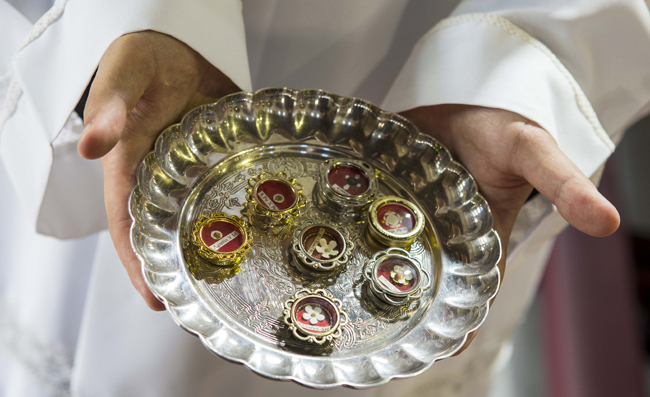
The current church at St Mary’s was blessed and opened on 2nd July 1893. It replaced the first St Mary’s – a small wooden church built on the site of the present car park around 1864. The land on which it was built was a grant of land from the NSW government in 1859 (before news of the declaration of the state of Queensland became known).
In the 1880s, Brisbane experienced an economic and building boom.
The expansion of the population meant that the chapel was no longer adequate to the needs of the South Brisbane congregation and a meeting was held in August 1889 to discuss the construction of a new and larger church.
Cardinal Moran laid the foundation stone of the new church on the 25th September 1892 in a ceremony attended by Archbishop Dunne, Archbishop Carr and other high-ranking clergy. The church was blessed and opened by Archbishop Dunne on 2nd July 1893.
From 1866 the original chapel had been a dual-purpose building also functioning as a school. After the opening of the new church it continued to be used as a school until 1909 when substantial new school buildings were built. The chapel then served as the infant’s school until 1926. A substantial bell housed in a timber belfry was erected in 1914 adjacent to the church and in 1915 a convent for the Sisters of Mercy was constructed, diagonally opposite the school on the corner of Cordelia and Peel Streets. The most significant change to the church since its construction in 1893 was the completion of the sanctuary, including vestry and sacristy, in December 1929.


With the influx of Catholic immigrants into the area after World War Two, St Mary’s became an important gathering place for a number of ethnic groups. Prior to the war the Lebanese community had used the church for Mass. Italian, Dutch, Polish, Lithuanian and Slovenian people attended St Mary’s for services conducted by their own priests. The Dutch Men’s Choir performed at the church during the 1950s and 1960s. As late as 1993, the Lithuanian and Slovenian communities regularly met at the church. The school closed in 1964 and the school, convent and belfry have since been demolished. The St Vincent de Paul centre now occupies the site of the school.
The residential nature of South Brisbane declined dramatically in the 1920’s, as the railway and wharves contributed to a more industrial nature. By 1964, when the school closed, there was only a small residential area around the church, and by 1980, the church was an island in an industrial area, with a small congregation and no money.
The church was placed on the State Heritage list in 2004. And then in 2006, the Brisbane City Council announced it would build a bridge across the river which would cause traffic to increase along Merivale Street, beside the church. The Council offered to finance noise and dust reduction measures for St Mary’s.
Hence the installation of air conditioners and an air flow system, the repair and sealing of the doors and windows, and the restoration of the leadlight and stained glass windows and double glazing.
